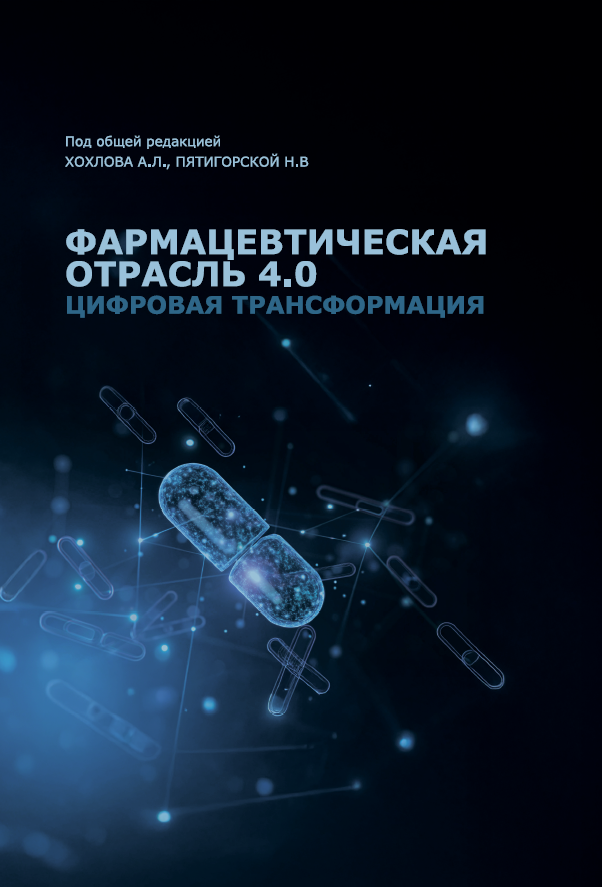Risks of drug interactions of antibacterial drugs used in the treatment of nosocomial pneumonia associated with coronavirus infection
https://doi.org/10.37489/2588-0519-2025-3-73-77
EDN: JHYVRH
Abstract
Introduction. Patients with severe COVID-19 complicated by nosocomial pneumonia (NP) are often elderly with multimorbidity, necessitating polytherapy and carrying a high risk of drug interactions (DIs). Particular attention should be paid to DIs involving antibacterial drugs, which are widely used in the treatment of NP.
Objective. To conduct a retrospective pharmacotherapeutic analysis of drug therapy in an elderly patient with COVID-19 and NP to identify and assess the clinical risks of potentially significant DIs associated with antibacterial drugs.
Materials and methods. Based on the analysis of the medical history of an 81‑year-old female patient, a quantitative and qualitative assessment of the prescribed drugs was performed. The international database Drugs.com and the domestic system MedBaseGeotar (beta-version) were used to identify and rank DIs. Only clinically significant (category Major/Significant) DIs involving antibacterial drugs were analyzed.
Results. A total of 30 drugs were used during therapy (36 when considering components of combination drugs). The Drugs.com system did not reveal any clinically significant DIs among antibacterial agents. The domestic MedBaseGeotar system identified three significant DIs: linezolid + fentanyl (risk of serotonin syndrome), meropenem + linezolid and polymyxin B + meropenem (risk of pseudomembranous colitis and nephrotoxicity). Clinical analysis noted a synergistic increase in serum creatinine during the combination of polymyxin B and meropenem, indicating realized nephrotoxicity.
Conclusion. Despite pronounced polypharmacy, the number of identified clinically significant DIs was relatively small. The domestic MedBaseGeotar system demonstrated higher informativeness compared to the international counterpart for this clinical case. The obtained data emphasize the need for careful monitoring of patients with polypharmacy, using multiple systems for DI detection, and further improvement of domestic drug interaction databases.
About the Authors
Ya. G. AmelinaRussian Federation
Yaroslavna G. Amelina — 3nd year postgraduate student, assistant of the Department of Clinical Pharmacology named after Yu. B. Belousov
Moscow
Competing Interests:
The authors declare no conflict of interest
O. M. Romashov
Russian Federation
Oleg M. Romashov — Associate Professor of the Department of Clinical Pharmacology named after Yu. B. Belousov; Clinical Pharmacologist
Moscow
Competing Interests:
The authors declare no conflict of interest
N. V. Teplova
Russian Federation
Natalia V. Teplova — Dr. Sci. (Med.), Professor, Head of the Department of Clinical Pharmacology named after Yu. B. Belousov
Moscow
Competing Interests:
The authors declare no conflict of interest
O. S. Gerasimova
Russian Federation
Olga S. Gerasimova — assistant of the Department of Clinical Pharmacology named after Yu. B. Belousov
Moscow
Competing Interests:
The authors declare no conflict of interest
References
1. WHO COVID-19 dashboard. World Health Organization WHO Data. Ссылка активна на 31.03.2025. https://data.who.int/dashboards/covid19/deaths.
2. Safdar N, Dezfulian C, Collard HR, Saint S. Clinical and economic consequences of ventilator-associated pneumonia: a systematic review. Crit Care Med. 2005 Oct;33(10):2184-93. doi: 10.1097/01.ccm.0000181731.53912.d9.
3. Nosocomial pneumonia in adults: Russian national guidelines. Edited by B.R. Gelfand. Moscow: Medical Information Agency Publishing House; 2016.
4. Kebina A.L., Sychyova A.S., et al. Clinical and anatomical profile of patients with severe COVID-19 infection. Lechashchij vrach. 2020;10:15-19. (In Russ.). DOI: 10.26295/ OS.2020.60.78.003.
5. Gnjidic D, Hilmer SN, Blyth FM, et al. Polypharmacy cutoff and outcomes: five or more medicines were used to identify community-dwelling older men at risk of different adverse outcomes. J Clin Epidemiol. 2012 Sep;65(9):989-95. doi: 10.1016/j.jclinepi.2012.02.018.
6. Wright RM, Sloane R, Pieper CF, et al. Underuse of indicated medications among physically frail older US veterans at the time of hospital discharge: results of a cross-sectional analysis of data from the Geriatric Evaluation and Management Drug Study. Am J Geriatr Pharmacother. 2009 Oct;7(5):271-80. doi: 10.1016/j.amjopharm.2009.11.002.
7. In Russia, the proportion of the population aged 65 and over has doubled over the past 50 years. (In Russ.).
8. Lazareva N.B., Shikh E.V., Rebrova E.V., Ryazanova A.Yu. Polypharmacy in Pediatrics: Modern Conditions. Current Pediatrics. 2019;18(3):212-218. (In Russ.).
9. Drug Interaction Checker. Drugs.com. Ссылка активна на 31.03.2025. https://www.drugs.com/drug_interactions.html.
10. Otdelyonov V.A., Novakova A.I., Karasev A.V., et al. Assessment of the frequency of potentially significant drug interactions in patients with polypharmacy in a multidisciplinary hospital. Clinical Pharmacology and Therapy. 2012;21(5):1-5. (In Russ.).
11. Drug interaction system. MedBaseGeotar (In Russ.)
Review
For citations:
Amelina Ya.G., Romashov O.M., Teplova N.V., Gerasimova O.S. Risks of drug interactions of antibacterial drugs used in the treatment of nosocomial pneumonia associated with coronavirus infection. Kachestvennaya Klinicheskaya Praktika = Good Clinical Practice. 2025;(3):73-77. (In Russ.) https://doi.org/10.37489/2588-0519-2025-3-73-77. EDN: JHYVRH
















































